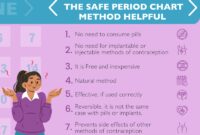Color Mixing Chart Acrylic Paint – Get my Beginner’s Guide to Color Mixing with helpful color mixing tips that you can put into practice right away!
Creating a color mixing chart is a way for artists to study how colors interact with each other. They can be used by those who work with watercolors, acrylics, oils and other media that can mix colors. This is a great way to learn more about colors. It also creates a color mixing guide that you can use later.
Color Mixing Chart Acrylic Paint

When you create color mixing charts, you must mix every color with every other color. With this exercise, you will be able to mix some colors that you would never have thought of otherwise. So, this is a great way to discover some great new color combinations and understand how colors work together!
Gouache Paint Faqs + Testing Artist Loft’s 12 Pack Of Colors
Creating a color chart can also help increase your confidence when it comes to mixing colors for painting. Many times you may know what color you want, but have no idea how to mix it. However, if you have already gone through the process of mixing all the colors together. Then you’ll have a much better idea of how to get the colors you need with the colors you have.
You can make color mixing cards with as many or as few colors as you like. But remember, if you want to create a color chart that mixes 24 colors… you’ll be mixing 576 squares! life! The color chart directly below only has 7 colors so it’s a great starting point with the colors I use often.
I chose a 9 x 12 sheet of watercolor paper to make the chart above. How I made this color chart with watercolor paints. Watercolor paper can also be used if you are painting color maps with acrylic paints or gouache. Technically, you can also use watercolor paper for an oil paint mixing chart. Although not archival. If you want your oil paint mixing chart to last, use coated canvas or thick paper.
Take a ruler and measure your color card so you have one square inch of space for each area. I also left an inch of space from the edge to the side and top edges where I labeled the color names. I made each of my squares one inch, but you can make the squares as small or as large as you like!
How To Make Paint Colors: 14 Steps (with Pictures)
Mark each square on the left side and top edge. You will mark the same color on each page in the same order – as shown in the sample image below.
Then paint the color patch next to each color name as shown in the image below. This serves as a reminder of what the color is next to the color name.
We start by drawing colored boxes with corresponding colors in a diagonal line. So, the first square is filled with cadmium yellow, the square next to it is cadmium red, and so on and so forth…

Now comes the fun part of creating the color chart. You can start actually mixing colors! Once you are in the cadmium red dot on the top edge and move down to the ultramarine blue, then mix the cadmium red and ultramarine blue together.
Color Mixing Chart And Complete Guide To The Color Wheel
You will do this for each of the colors. However, you will notice that you create two sets of each color combination. So, every time you mix cadmium + ultramarine blue, you mix a second time on the other side of the diagonal line.
If you haven’t already – grab my FREE Color Mixing Guide for helpful color mixing instructions and techniques!
If you are wondering how much of each color you should put into the mix, you will always do 50% of each. So when you mix ultramarine blue + cadmium yellow you will mix 50% cadmium yellow + 50% ultramarine blue. In this way, there is a mixture of the same colors.
Because it doesn’t make much sense to mix the same color twice in the same way. You will create a light colored mixture first and then a darker one. Look at the image below and how the left side of the color palette is lighter and the right side is darker.
Take Care With Your Greens
Additionally, you will place your base colors three times. Once horizontally along the first top row of squares. Once vertically along the first left row of squares and then once diagonally down and around the middle. To clarify, when I say primary colors, I mean the colors you use and whose names you wrote down.
You will set these colors in three different values. On the far left edge, the base colors will be the lightest. Along the center line, the diagonals will be average values. Then along the top edge of the color will be the darkest values. This part of creating a color chart will really help you understand tonal values and how to create them.
The color mixing chart used in this article is made with watercolor. However, the principles are the same regardless of which medium you use. Be it acrylic, oil paint, gouache or something else!

When you mix your lighter colors with watercolor, you use less pigment and more water. When you mix the color chart with oil paint, acrylic or gouache, you will use white to lighten the colors.
How To Create A Watercolor Palette For 12 Colors
Now all you have to do is mix all the colors for your color palette! It can take some time to mix all the colors… But the learning is in the process of mixing colors and making a color chart! This can be a fun discovery process as you learn which color is created when you mix each color together.
Now that you have a nice rainbow color mixing chart, how do you use it? Not only will you learn a lot while creating a color board. It can also serve as a useful reference and guide for mixing colors when working on your own projects. For example, if you are ever confused and don’t know how to get a certain color. For reference, see the color mixing chart to see which colors you need to mix.
You can also add to your color card by mixing new colors when you buy them. This is a great way to get to know your new color. And also, what types and shades of colors can be mixed with it!
This is the same watercolor paper I used to make the color mixing chart in this article.
How To Mix Watercolors
My ever-popular Ultimate Color Mixing Guide will help eliminate color mixing uncertainty. With over 60 color mixing tables – spend less time mixing colors and more time creating the color shades you want for your image! When you visit an art store, you can choose from hundreds of different colors of paint. If you’re like me, they all look so enticing that you want to buy them all. However, quality paint is expensive, so you probably don’t want to buy a separate tube for each color you might want to use in your paintings. Learning how to mix colors will not only save you a lot of money, but you’ll have a wider selection of colors for your work. Read on to find out how I choose which colors to use for blending.
Some people will tell you that you only need one red, yellow and blue to mix any color because they are the primary colors. Technically that’s true, but it doesn’t work that way when it comes to coloring. This is the reason why.
Paint companies cannot accurately reproduce primary colors. Primary colors come from the refraction of light, just like a rainbow. Instead, paint companies use pigments to mimic the primary colors as closely as possible, but always lean slightly toward one or the other of the other primary colors. You’ll notice that artists’ paints usually come in a few different shades for each base color. They are usually called warm and cool tones. If you have a warm and cool tone from each base color, you will be able to mix any color you like. You also need some white to match the tone of your colors and I think it’s worth adding at least one green to your picture.

Paint companies then decide to give these different shades fancy names, which can make it even more difficult to know exactly what you’re getting. In the next section, I’ll explain a bit about warm and cool tones and why they’re important when it comes to mixing your own colors.
Making The Color Palette For Skin Tones A Bit Easier…
How I love
Acrylic color mixing chart, liquitex acrylic paint mixing chart, acrylic color mixing chart pdf, acrylic paint color mixing guide, acrylic paint color mixing recipes, mixing acrylic paint color wheel, golden acrylic color mixing chart, acrylic paint mixing chart, acrylic paint mixing ratio chart, acrylic paint color mixing, acrylic paint skin color mixing chart, acrylic paint mixing chart pdf


